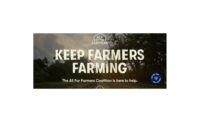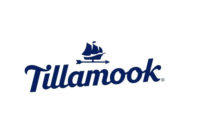Tillamook County Creamery Association plays the long game to match its values
As a cooperative, Tillamook County Creamery Association prioritizes forward-thinking investments in product development and community initiatives.


























Last year was a monumental one for the world, and a newsworthy one for Tillamook County Creamery Association, too. The Tillamook, Ore.-based cooperative became a Certified B Corporation, donated $4 million dollars to a COVID-19 relief fund and partnered with the American Farmland Trust to help secure farmland for future generations. And it did all of this while increasing its sales from $849.7 million in 2019 to a forecasted $938.6 million in 2020, says Patrick Criteser, president and CEO.
In certain ways, this was just par for the course for 112-year-old Tillamook, as these corporate-citizenship-based decisions were already in its DNA. The cooperative consists of about 80 farmer-owners who live in the Tillamook County area and who value the long-term success of the company over short-term gains.
“As farmer-owned and led for over 110 years, we have stakeholders, not shareholders,” says Paul Snyder, executive vice president, stewardship.
Criteser agrees.
“The aspirations of the cooperative members are for this cooperative to stay strong and be profitable and continue to stay true to its values over coming generations,” he explains. “So they certainly are interested in quarterly earnings, but that's not the main thing that they're interested in.”
Long-term planning
As a cooperative, Tillamook is owned and run by the people who provide its milk, and those farmer-owners also select a board of directors to which Criteser reports as CEO. It’s a “really close partnership,” he says.
While it’s become en vogue for companies to talk about stakeholder value, Tillamook has operated this way for years, as its decisions are guided by its farmer-owners’ “hopes and dreams for the business and for their individual farms,” Criteser points out.
This long-term viewpoint means that Tillamook can prioritize its values even if there’s something in the marketplace that might challenge them. The cooperative also can make decisions that might not be profitable immediately. An example of this is Tillamook’s recent investment in a national expansion “knowing that it's going to depress earnings in the near term, but someday it'll pay off for the cooperative,” Criteser says.
Up until 2017, Tillamook focused on growing in the Western part of the United States. That year, the cooperative came up with a proposal to expand its distribution in other parts of the country, Criteser explains.
“We put together a plan [and] approached our board and our members with the idea that it was time for us to move east and to sell products and gain distribution and markets around the U.S.,” he says.
Since then, Tillamook has developed relationships with consumers across the country. It has expanded into tens of thousands of new stores and introduced its products to “over 6 million new households” in the past three years, Criteser points out.
“It's been challenging generally to expand our business from a regional business to a national business,” he adds. “But our team has just done an amazing job of generating demand, developing great relationships with retailers and getting product to those markets.”
The cooperative’s future-thinking viewpoint also allows Tillamook to invest in product areas that might not be immediately profitable, including the yogurt category, which Criteser says has been a difficult category in which to compete in recent years.
Tillamook recently refreshed its yogurt offerings to include the Tillamook Creamery Collection — a line of yogurt that features side-by-side flavors. The yogurt flavor combinations include Oregon Strawberry paired with Plain, Northwest Raspberry paired with Blackberry, Oregon Blueberry paired with Vanilla, California Peach paired with Plain, Dark Cherry paired with Plain and Vanilla Bean paired with Plain.
Offerings across the dairy case
Beyond its recent yogurt release, Tillamook’s product offerings are extensive. The company produces 340 SKUs in six categories: cheese, ice cream, cream cheese spreads, butter, yogurt and sour cream, says Sue Kapllani, vice president, marketing. Its primary focus is traditional retail (grocery, mass merchandise, specialty and club stores), but it does also serve foodservice locations across the country. Tillamook initially offered only cheese products, and it uses the same recipe today as it did in 1909 for its cheddar.
“All Tillamook cheddars are made from the exact same recipe and then naturally aged in 40-pound blocks until just perfect,” Kapllani says. “In fact, at any given time, Tillamook has approximately $250 million worth of cheese sitting in our warehouse aging.”
These blocks become shreds, slices and block cheeses or are aged even longer, three to 10 years, for the company’s Maker’s Reserve line, Kapllani explains. And Tillamook is further expanding its offerings in 2021. The cooperative is introducing cracker cuts of some of its most popular cheeses (Sharp Yellow cheddar, Extra Sharp White cheddar and pepper jack).
On the frozen dessert side, Tillamook offers 48-ounce family-sized ice cream cartons and ice cream sandwiches. Additionally, in 2021, the cooperative introduced an all-custard line, “our creamiest and most indulgent offering yet,” Kapllani says. The line is available in eight flavors.
“Tillamook has introduced more new products in the past five years than the preceding 50, and we’re excited to continue that trend in the coming year,” Kapllani emphasizes.
Tillamook also produces a range of cultured dairy products. In addition to the aforementioned Tillamook Creamery Collection, the cooperative offers the Tillamook Good & Creamy and Tillamook Greek yogurt lines, as well as sour cream (in full-fat and reduced fat versions) and cream cheese spreads, Kapllani says. The spreads are a recent introduction and are available in Original, Aged Cheddar, Seriously Strawberry, Very Veggie and Chive & Onion (new in 2021); they contain no fillers, gums or stabilizers.
Butter is also a part of Tillamook’s portfolio.
“Our premium butter offerings are made with 81% fat for extra-creamy flavor and superior spreadability,” Kapllani says. “Our salted butter is made with natural sea salt, lending to an amazing flavor and well-balanced butter profile.”
Values-based marketing
According to Kapllani, Tillamook uses a combination of direct-to-consumer and in-store activations to market its products. Because the cooperative offers a range of dairy products, it leads with an overarching brand strategy instead of focusing on marketing individual products.
“We are so much more than our products alone; consumers expect us to lead with our values in everything we do,” she adds.
Key to these values is Tillamook’s focus on “people over products,” which is emphasized by the company’s brand campaign — “Do Right by Every Bite.” This viewpoint is used on “every angle of [Tillamook’s] marketing communications offense,” Kapllani says.
The campaign highlights the values of Tillamook’s farmer-owners and how that informs the cooperative’s decisions. It also demonstrates Tillamook’s “unwavering commitment to elevating standards and taking our time, not shortcuts, as we obsess the make process to ensure every bite evokes that ‘how have I never tasted this before; I won’t go back’ consumer experience,” Kapllani emphasizes.
Tillamook also stresses its commitment to quality in marketing materials — for example, its natural cheese-aging process, its use of only milk without artificial growth hormones, and its products’ lack of artificial flavors, coloring or sweeteners.
The cooperative positions its products as “everyday premium,” Criteser maintains, meaning its offerings cost a little bit more, but are still affordable for everyday shopping trips. And to merit that slightly higher price, Tillamook’s products feature high-quality ingredients. For example, Tillamook ice cream has a higher cream content than many other ice creams.
“Fundamental to our business strategy is this idea of artisan at scale,” Criteser continues. “So we make decisions throughout the formulation of our products and throughout the production process that result in a higher-quality product that costs us more to make.”
While Tillamook already has a well-developed brand presence in the Pacific Northwest, it is still developing its reputation in other parts of the country. Within that goal, Tillamook’s target consumer is the “food-thusiast” — a person who cares deeply about what they eat inside and outside the home.
“We reach our food-thusiasts through a number of platforms — primarily digital, but also local market broadcast, out-of-home (billboards) and podcasts. We then focus on shopper marketing, social, PR, partnerships, event and digital marketing channels to help fuel our relationship with our consumers,” Kapllani says. “Beginning in 2021, we also look forward to larger integrations with influential partnerships at a national media scale.”
The coronavirus pandemic changed how Tillamook approached marketing, Kapllani points out. The cooperative “majorly adjusted” the moments it chose to put out media and its overall messaging.
“Consumers more than ever want to support brands that are in line with their personal values, and consumers out East, in particular, don’t know who we are and what we stand for,” she says. “We did not want to wait for them to figure it out; we want them to know up front who Tillamook is.”
Tillamook also polled its fan base at the beginning of the pandemic to learn what content they were interested in seeing on social media. The unanimous response was “recipe and overall cooking inspiration” as more people transitioned to at-home eating. The cooperative adjusted its social strategy to include this type of content, as well as more kid-centric media.
Taking responsibility
COVID-19 also deeply influenced Tillamook’s idea of corporate citizenship. Early in the pandemic, Tillamook realized that because of the increase in at-home consumption, its business “could do fairly well,” Criteser says. Because of this, the cooperative wanted to put money into a COVID-response fund to help its community.
“We wanted to make a real impact and for our response to be equal to the crisis. For us, that meant supporting the people and the places that have supported us for so many years,” says Snyder. “Our farmer-owners committed to a $4 million relief plan to help our employees, communities and industry partners respond to and recover from the COVID-19 crisis.”
The COVID relief plan included expanded sick leave for all employees, a $200,000 donation to the Oregon Food Bank and donations to other local food banks, and the creation of “the Hometown Resilience Fund,” which provides assistance to nonprofits and small businesses in Tillamook and Morrow counties.
Tillamook also looked into other ways to use its profits in 2020, Criteser says, and landed on partnering with American Farmland Trust — a nonprofit that works to preserve farmland and support farmers across the country — to come up with the All For Farmers campaign.
“One of the things that's important to us is preserving and sustaining the farming way of life,” Criteser emphasizes. “And so we knew at that time that we were going to look for a way to … reach out beyond our own communities across the country and to help with that issue — particularly given the alarming loss of farmland.”
In September 2020, Tillamook gave a percentage of its profits to American Farmland Trust and also partnered with actor Eva Longoria to get the word out to the media about the All For Farmers campaign.
“We raised and donated $1.6 million, which was provided to farmers as direct grants to preserve farmland, to help them get through the pandemic, to help them update practices,” Criteser says. “We really wanted to raise awareness of what are the challenges being faced by farmers today and really the ingenuity and creativity and entrepreneurship that goes into farming.”
In addition to the money it donated, Tillamook used the All For Farmers platform as a way to “shorten the distance” between consumers and the farmers who grow their food, Criteser notes. As part of this, Tillamook developed a social media initiative that encouraged consumers to thank farmers with the hashtag #AllForFarmers.
“In that way, we were trying to connect farmers and consumers and raise awareness for farming,” Criteser says.
Stewardship also is crucial to Tillamook’s ideas around corporate responsibility. Its board of directors adopted a formal stewardship commitment in 2017, which “drives [Tillamook’s] actions that improve the lives of any one of our stakeholders, including farms, cows, ecosystems, consumers, employees and community,” says Snyder.
The proof of the cooperative’s extensive corporate citizenship efforts is in the pudding: The cooperative was designated a Certified B Corporation (B Corp) in November 2020. The prestigious honor is given to a select few companies that balance purpose and profit. B Corps are for-profit companies that use the power of business to build a more inclusive and sustainable economy, Tillamook said in a press release at the time of the announcement.
“We see our B Corp certification as another sign that we are on the right track,” says Snyder. “We have a lot more work to do, and but will continue to improve and accelerate this work.”
Future growth
Over the past few years, Tillamook focused on marketing itself in a cost-effective and creative manner to consumers in parts of the United States where it might not yet have brand recognition. This will continue to be the cooperative’s priority in the near-term future, Criteser explains.
“The key has been with modest marketing budgets, how do we reach people?,” he adds. “How do we capture their interest, and how do we tell them about who we are so they can decide for themselves whether they identify with the brand and our products?”
When choosing where to expand, Tillamook looks into whether or not it can really create a presence in a given market. This means ensuring it can offer enough products within a retail store or chain that consumers can easily find the Tillamook brand.
“[With] a couple of SKUs on the shelf in a couple of stores in a market, you can't justify the marketing that goes into getting attention and awareness with consumers,” he notes.
In the future, Tillamook wants to further expand its product offerings east of the Rockies. Criteser says the cooperative’s ice cream and cheese have taken off in those areas, but it still has limited distribution of other products such as butter and yogurt.
“We believe we can be a great everyday premium option for consumers in every part of the United States across multiple categories,” he says.
Looking for a reprint of this article?
From high-res PDFs to custom plaques, order your copy today!



















